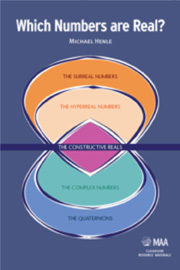5 - The Constructive Reals
from III - ALTERNATIVE LINES
Summary
God made the integers, everything else is the work of man.
—Leopold KroneckerBuilding on the positive integers, weaving a web of ever more sets and more functions, we get the basic structures of mathematics: the rational number system, the real number system, the Euclidean spaces, the complex number system, the algebraic number fields, Hilbert space, the classical groups, and so forth. Within the framework of these structures most mathematics is done. Everything attaches itself to number, and every mathematical statement ultimately expresses the fact that if we perform certain computations within the set of positive integers, we shall get certain results.
—Errett BishopConstructivist Criticism of Classical Mathematics
The constructive reals are the product of a radically conservative approach to mathematics. The constructivists take the integers as intuitively given, god given as Kronecker said, and the one and only source of truth in mathematics. To preserve this truth, they insist that all mathematical statements should be verifiable by computations within integers. The key idea here is that of a computation, by which is meant an operation or sequence of operations that can be performed by a finite intelligence (you or me, for example, or a digital computer) in a finite number of steps. By insisting that mathematics be computationally verifiable or reducible to finite computations with integers, the constructivists aim to guarantee truth in mathematics.
Information
- Type
- Chapter
- Information
- Which Numbers are Real? , pp. 97 - 124Publisher: Mathematical Association of AmericaPrint publication year: 2012
